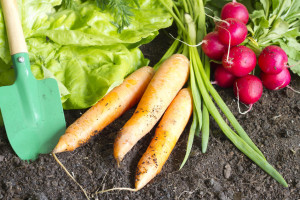Need Help Identifying Plants With Cold Weather Resilience? Here’s Your Guide
 If you’re limiting yourself to only one growing season, it may be time to try something new. There are a few vegetables that do well in a winter garden, and some produce a sweeter, milder taste that may make you a big fan of planting in the fall. Identifying plants that you can grow throughout the winter is easy with this list.
If you’re limiting yourself to only one growing season, it may be time to try something new. There are a few vegetables that do well in a winter garden, and some produce a sweeter, milder taste that may make you a big fan of planting in the fall. Identifying plants that you can grow throughout the winter is easy with this list.
Radishes: This is a particularly good choice for those that find summer radishes a bit too spicy, because winter radishes are much sweeter. The grow cycle for radishes is only about a month, so you can chase the blues of many a cloudy winter day with the refreshing crunch of radishes. They can be planted outside in late August or early September with a thick mulch covering, but you can also add a floating row cover or a cloche.
Carrots: If you want full-size carrots, you’ll need to plant before the end of July, but carrot seeds can be sewn a little later to enjoy baby carrots all winter long. Carrot seeds are tiny and can be nearly impossible to space evenly or even in rows with a steady hand. Harvesting baby carrots allows you to thin your plants for better growth and these sweet little vegetables are a welcome taste that reminds you that spring will come again.
Beets: When identifying plants for your winter garden, don’t forget the candy of the harvest. Beets use sugar to ward off freezing temperatures, so they produce a delicious harvest during the winter months. As with carrots, you can plant beets a little more closely spaced than recommended, and then harvest baby beets throughout the cold months, thinning as you go.
Mixed greens: It’s hard to beat a fresh salad clipped from your own garden in January. Sewing loose leaf mixed greens can be fun, because you can choose the mix of your varieties and clip it all winter long for delicious, fresh taste on your table. When the plants are between three and six inches tall, you can clip them about halfway down, and then the plants will grow again for a spring harvest. Choose any combination of mustard greens, Swiss chard, spinach, kale and leaf lettuces.
Kale: If you plant kale in late summer, you’ll enjoy this hardy winter vegetable throughout the cold months. Even if you plant it later, it makes a nice addition to your mixed baby greens. Best of all, the sweet winter leaf needs little protection against the winter cold, and whatever you don’t harvest will burst into flowering plants when spring arrives.
When in doubt, be sure to cover each of these plants with a fluffy layer of mulch, or try a floating row cover or cloche to protect them from extreme winter temperatures. Even in colder climates, these winter vegetables make good choices for a taste of spring all winter long.
Identifying plants in a winter garden with Kincaid Plant Markers will help you provide the individual care your vegetables require. Take a look at our full selection to see how our plant markers will help your garden stay organized year after year. The only plant markers made completely with stainless steel, they are designed for a lifetime of gardening.
